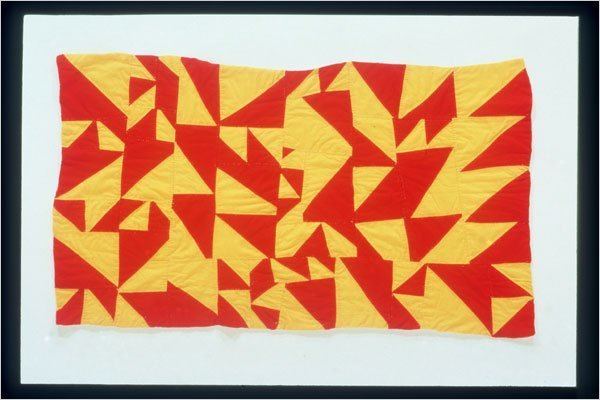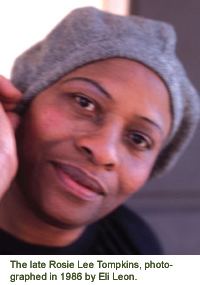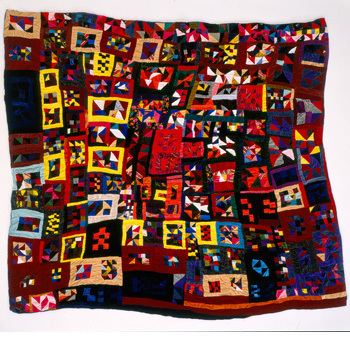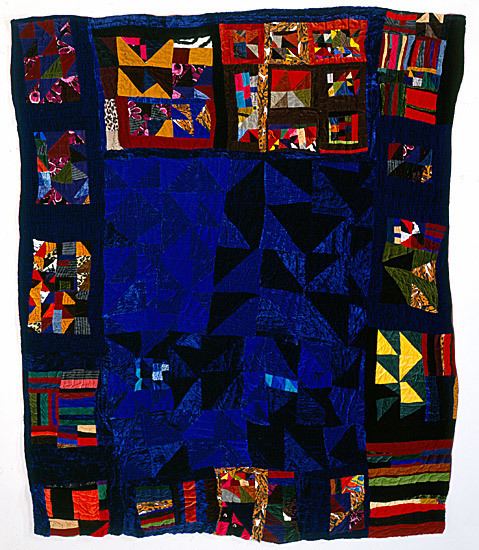Name Rosie Tompkins | ||
 | ||
Died December 2006, Richmond, California, United States | ||
Rosie Lee Tompkins (1936–2006) is the assumed name of Effie Mae Martin Howard, a widely acclaimed Richmond, California quiltmaker. She was born to a sharecropping family in Arkansas.

Work

Ms. Tompkins, who had helped her mother make quilts as a child, began to quilt seriously about 1980, while making a living as a practical nurse. She said she believed God directed her hand and her art. Her abstract, improvisational compositions often had a personal significance: one of her more well-known works, "Three Sixes," involves three relatives whose birthdays include the number 6. Despite the fact that she was a deeply private person and rarely sold her quilts, her work was discovered by Eli Leon, an Oakland-based collector specializing in African-American quilts, and he featured it on the cover of the catalog for an exhibition he organized, Who'd A Thought It: Improvisation in African-American Quiltmaking, which debuted at the San Francisco Craft & Folk Art Museum in 1987 and traveled for several years. Tompkins' quilts were featured in a solo exhibition at the Berkeley Art Museum (1997), at Peter Blum Gallery in New York City (2003), and at the Shelburne Museum in Vermont (2007). They were also included in the 2002 Biennial of the Whitney Museum of American Art and have been shown at the National Museum of Women in the Arts in Washington, DC; one image is available on their web site. In 2016, her quilts were featured in an exhibition of five quilt artists at the Oakland Museum of California.

The curator of the Berkeley show, Lawrence Rinder, wrote: 'In front of Tompkins's work I feel that certain Modernist ambitions may in fact be achievable. Here are feelings of awe, elation, and sublimity; here is an absolute mastery of color, texture and composition; here is inventiveness and originality so palpable and intense that each work seems like a new and total risk, a risk so extreme that only utter faith in the power of the creative spirit could have engendered it.' Critics were equal in their praise: 'Tompkins' textile art [works] ... demolish the category' 'These quilts are works of such distinction and devotion that they supersede established art-historical categories, forcing reviewers to retreat to that dumbfounded admiration that attracted us to art in the first place'.

Tompkins's quilts were not made from old clothes or other scraps but from fabrics she purchased for their textures and light-reflecting qualities, including velvet, fake fur, wool, silk and Lurex. She worked with the convention of the quilt block but with enormous variation in size, free distortions of shape and vivid color contrasts that have been described as "geometric anarchy" and "riotous mosaics."
